Sono Belle Jeju (소노벨 제주(구 대명리조트 제주))
17.1Km 2019-11-04
577, Sinbuk-ro, Jeju-si, Jeju-do
+82-1588-4888
Sono Belle Jeju is an upscale resort located 20 kilometers away from Jeju International Airport on Jeju Island. It has 390 guestrooms with full amenities, as well as a wide range of meeting venues and convenience/dining facilities including five ballrooms and seminar halls, an outdoor garden, cafeteria, convenience store, laundry room, sauna and fitness center.
Gwakji Beach (Gwakji Gwamulhaebyeon Beach) (곽지해수욕장 (곽지과물해변))
17.2Km 2023-02-16
Geumseong 5-gil, Jeju-si, Jeju-do
+82-64-728-3985
Gwakji Beach is a beach that has nice conditions including a 350-meter-long, 70-meter-wide white sand beach, an average water depth of 1.5 meters and a slope of about 5 to 8 degrees. Thanks to these conditions, a youth training facility was installed and groups of tourists visit here every year. Gwakji-ri is a historic village where shell mounds from prehistoric times were once excavated. According to a local legend, Gwakji Beach used to be a village in the ancient days, but one day, it became buried in the sand.
Jeju Central Park (제주 센트럴파크)
17.3Km 2025-01-08
606, Bijarim-ro, Jeju-si, Jeju-do
+82-64-782-7720
Jeju Central Park is a miniature theme park located in the beautiful scenery of Hallasan Mountain. The park is divided into five different zones, including the World Heritage Land, Fantasy Land, and Dinosaur Land. It serves as a fun education park for children and teenagers where they can explore exotic landscapes without having to travel far. It also has the nation's first and largest outdoor go-kart track.
Jeju Fire Festival (제주들불축제)
17.7Km 2025-03-05
San 59-8 Bongseong-ri, Jeju-si, Jeju-do
+82-64-728-2753
Jeju Fire Festival is a representative cultural festival related to Jeju's culture of livestock care. Held every March at Saebyeoloreum Volcanic Cone, the night sky lights up with fiery red. The festival features a media façade show, torch march, fire show, and more as well as various programs and food trucks.
Saebyeol Oreum Volcanic Cone (새별오름)
17.8Km 2025-08-19
San 59-8 Bongseong-ri, Aewol-eup, Jeju-si, Jeju-do
+82-64-740-6000
Located in Bongseong-ri, Aewol-eup, Jeju-si, Saebyeol Oreum Volcanic Cone is a parasitic volcano cone set alone that looks like a lonely star (Saetbyeol in Korean) in the night sky, giving this volcano cone its name. Based on the highest south peak, small peaks continue in the northwest direction, forming an oval-shape. The oreum is a mid-sized oreum among 360 oreums on Jeju Island and it features a stunning view from the peak of the beautiful ridges connecting to one another.
Dolhareubang Museum (돌하르방미술관)
18.6Km 2024-03-12
70 Bukchonseo 1-gil, Jocheon-eup, Jeju-si, Jeju-do
+82-64-782-0570
Dolhareubang Museum is an outdoor art gallery that exhibits 48 original dolhareubang sculptures recreated by artists native to Jeju Island. Visitors can enjoy the artworks while strolling through the Gotjawal in Jeju. Along the forest path, there are various interpretations of dolhareubang, such as dolhareubang practicing yoga and dolhareubang throwing hearts, providing a fresh perspective on these iconic stone statues.
Sangumburi Crater (산굼부리)
18.8Km 2024-11-28
768 Bijarim-ro, Jeju-si, Jeju-do
+82-64-783-9900
Sangumburi Crater has been designated as a Natural Monument. It is located on the southeast side of Jeju, and is a flat crater, about 650 meters wide, 100 meters deep, and 2,070 meters in circumference. If you look at the crater from above up, it looks like a man-made circular stadium. There is a variety of plant-life in the crater. On the north side, Nandaeseong vegetation such as red-thorn trees, and magnolia trees grow, along with the rare winter strawberries. On the south side of the crater, Ondaerim vegetation such as evergreens, maples, and mountain strawberry trees cover the area. Because so many different kinds of trees and plants grow in such a limited space, it attracts the attention of researchers as well.
Saryeoni Forest Trail (사려니숲길)
18.9Km 2025-04-01
Entrance of Bulgeun Oreum, Gasi-ri, Seogwipo-si, Jeju-do
+82-64-900-8800
Saryeoni Forest Trail cuts through the dense Japanese cedar forest growing between Mulchat Oreum and Saryeoni Oreum, starting from the entrance on Regional Road 1112. While the vast majority of the trees growing here are Japanese cedar, visitors can also see Japanese oak, birch, snowbell trees, and cypress trees along this 550-meter-long trail. The forest trail is known as one of Jeju's top 31 hidden attractions, and is well-known as being very protected. It is very popular among tourists who enjoy hiking and the outdoors.
Daheeyeon Garden (다희연)
19.1Km 2019-12-20
117, Seongyo-ro, Jeju-si, Jeju-do
+82-64-782-0005
Daheeyeon Garden is a major tea farm on Jeju Island, which has the best conditions for growing great tea in a natural environment. Jeju has a year-round average temerature of 16℃ and nutrient-rich soil with plenty of water for the tea plants to grow well. The two cave cafes, Evergreen Luce Garden and Eve Hall, serve naturally fermented green tea bread, cookies, muffins, green tea latte and green tea juice.
Evergreen Luce outdoor garden was built inside a cave formed naturally by a volcanic eruption. Despite being in a cave, this outdoor garden has ponds, bridges, indigenous trees and flowers. Eve Hall is located through a hole in the cave ceiling and can be only reached after passing through a tunnel-like cave. The deepest part of Eve Hall is roughly 30 meters and is home to bats; if you are lucky, you might even see a few.
Haenyeo’s Kitchen Bukchon Branch (해녀의부엌 북촌점)
19.3Km 2024-01-09
31 Bukchon 9-gil, Jocheon-eup, Jeju-si, Jeju-do
Haenyeo’s Kitchen Bukchon Branch was renovated from a fishing village warehouse and is a unique restaurant where visitors can enjoy meals while appreciating the media art in a 360-degree panorama. Only 14 people are invited to a table of dishes carefully prepared by 12 artists to taste a course meal of seafood collected by haenyeo (female divers who collect seafood). While dining, the customers are entertained with media art and a storytelling by a docent that depicts the life of haenyeo divers and their village. The four-course lunch lasts 80 minutes, and the seven-course dinner lasts 120 minutes. Unique dishes, such as shindari, the fermented beverage; sangwetteok, Jeju’s traditional rice cake; uyeongpat with bracken and bean sprouts; Nangpun Set Menu comprised of top shells, red tilefish, seafood wraps, steamed pork slices, vegetables, and other side dishes; omegi rice cakes, become special memories of the trip in itself. Admission is available for those aged 6 or older, and reservations are required.
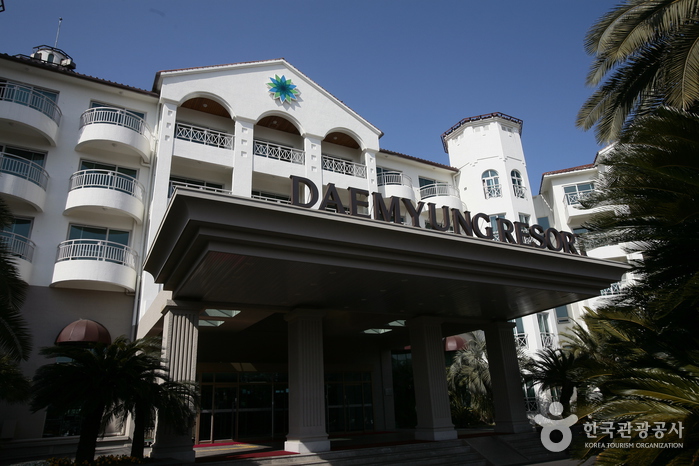

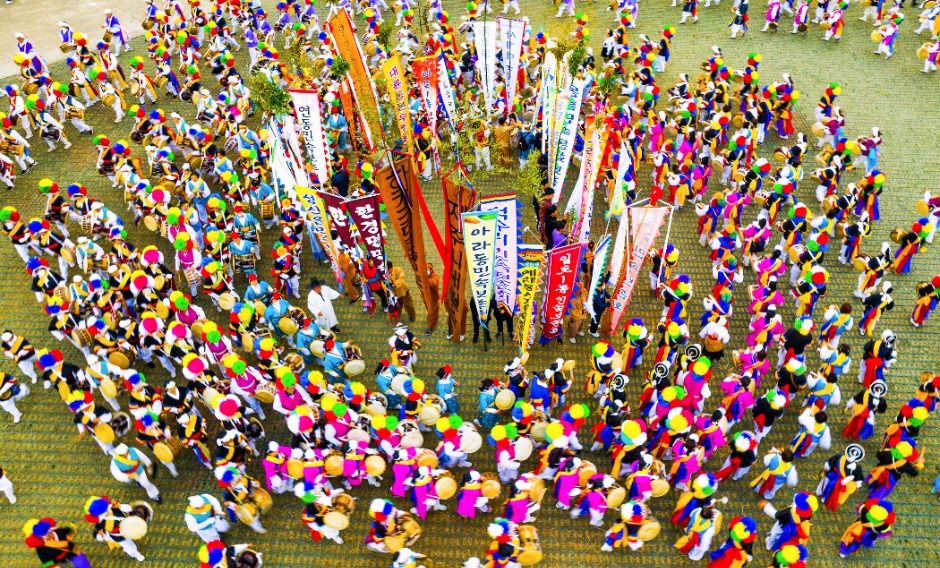
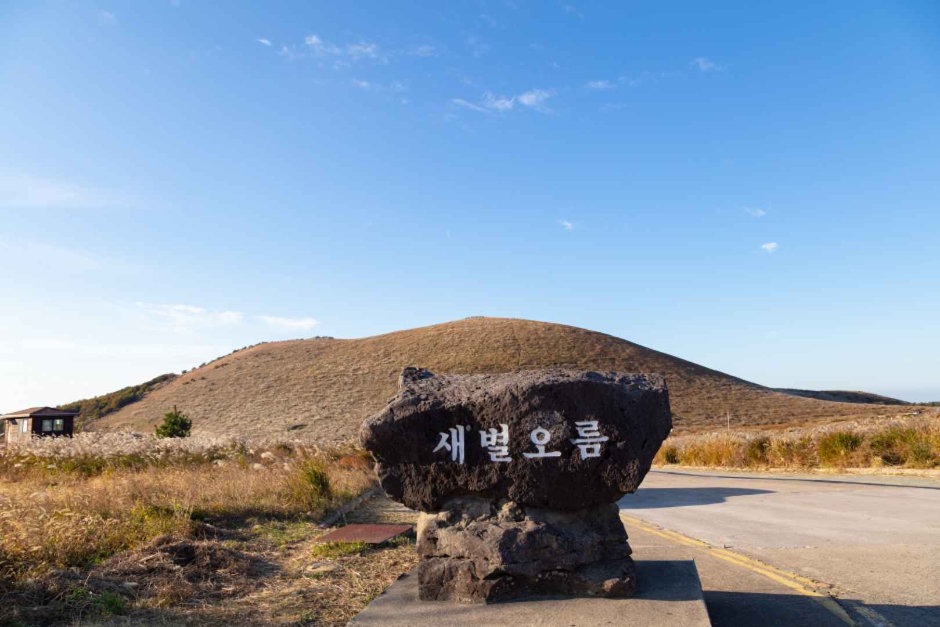
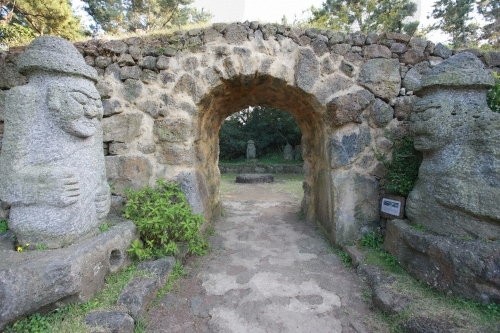
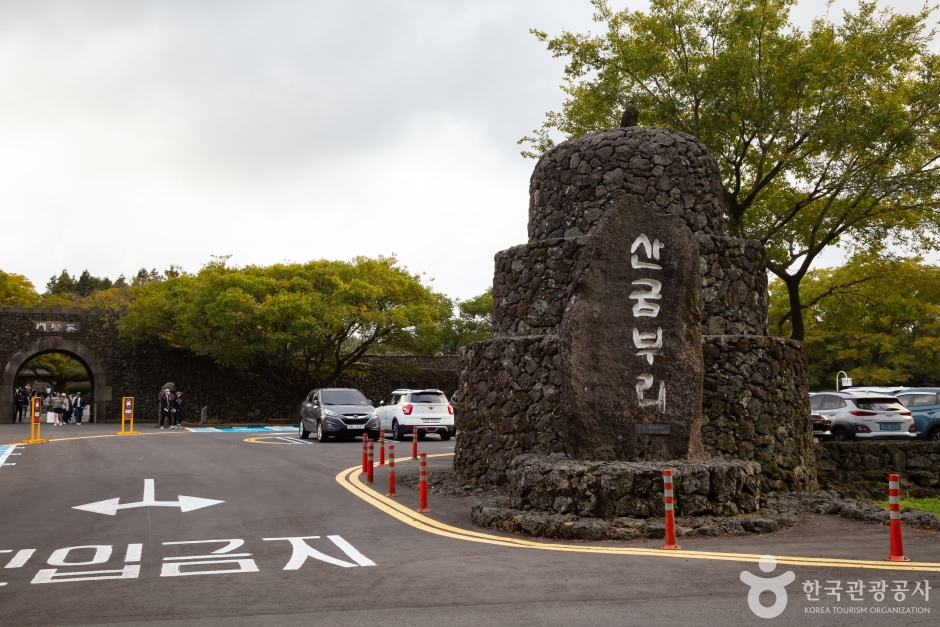
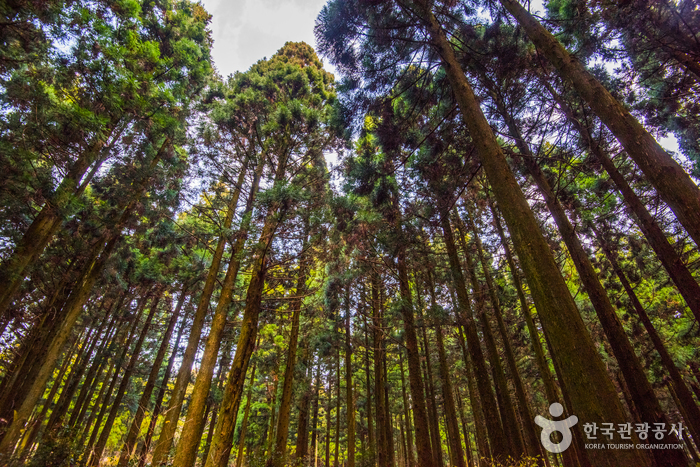
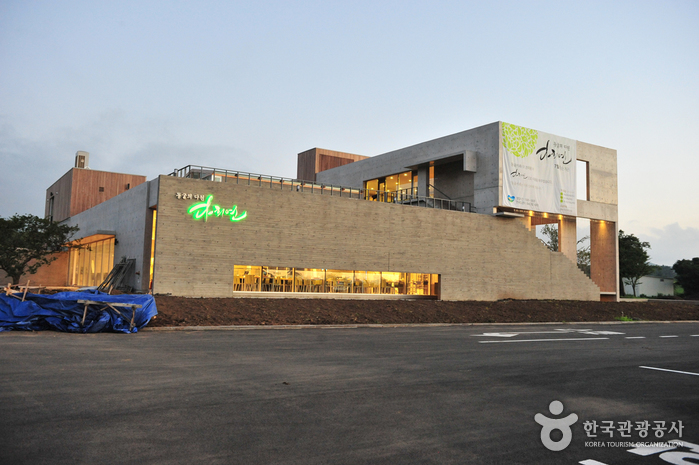
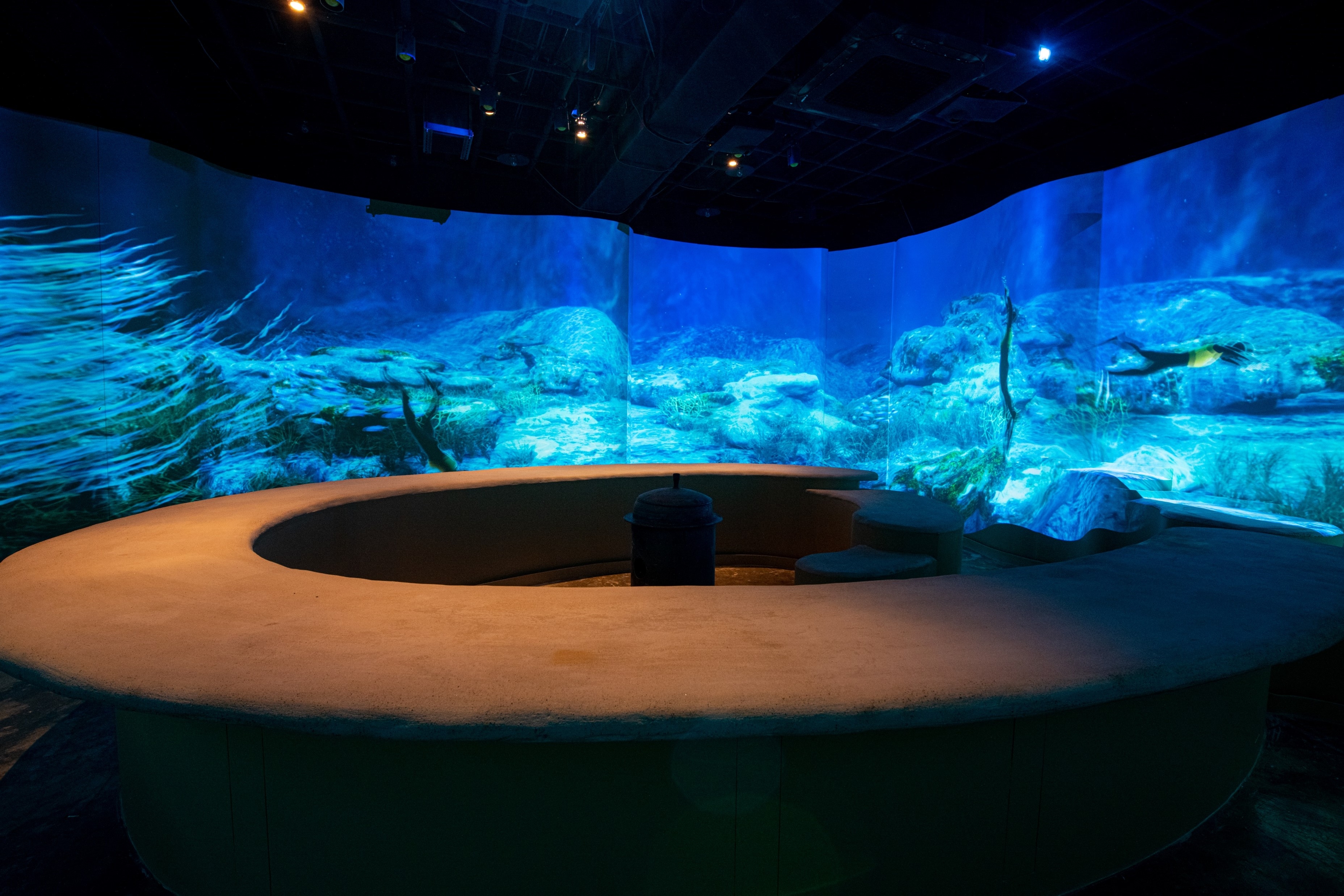
 English
English
 한국어
한국어 日本語
日本語 中文(简体)
中文(简体) Deutsch
Deutsch Français
Français Español
Español Русский
Русский